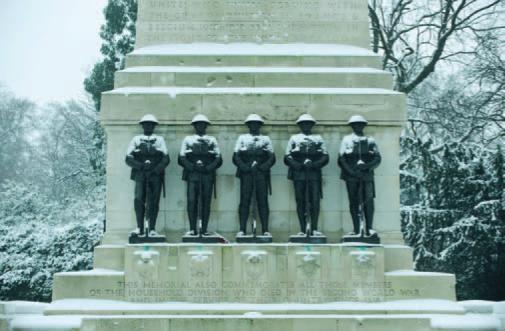Basic HTML Version

BCD Special Report on
Historic Churches
18th annual edition
11
A Place of
Honour
War memorial heritage in the United Kingdom
Colin Amery
T
here is
something extremely moving
about the way the Cenotaph at the
heart of London remains the focus
of the nation’s war memories. The simple,
almost abstract dignity of Sir Edwin Lutyens’
design has proved to be timeless and powerful.
Every year the neat, black-clad figure of
the Queen steps backwards from laying
her wreath of scarlet poppies and solemnly
bows before the monumental stone. The
concise inscription, ‘The Glorious Dead’, still
evokes intense memories and emotions (it
was chosen by Rudyard Kipling, whose son
was killed at the Battle of Loos in 1915).
War memorials seek to reunite those
separated by conflict. They express a
sense of grief and loss. The Classical world
commemorated heroes and deeds of heroism
more than sacrifice, and the burial places
of triumphant rulers often have a wider
resonance as reminders of conflict. The
American Civil War (1861–65) produced
some of the earliest war memorials that
were closely related to specific battlefields.
Conquest has also been commemorated
by major buildings like the Parthenon and
Battle Abbey near Hastings in Sussex.
In the United Kingdom, although the
sacrifices in the Napoleonic Wars (1799–1815)
and the fighting in the Crimea (1853–1856)
are commemorated, it is really only after the
Boer War (1899–1902) that memorials become
both numerous and significant. It was the
advent of global conflict in the 20th century,
however, that saw memorials multiply and
spread across the UK as never before. The
The Guards Memorial, Horse Guards Parade, London (Photo: iStockphoto.com/Johnny Greig)

